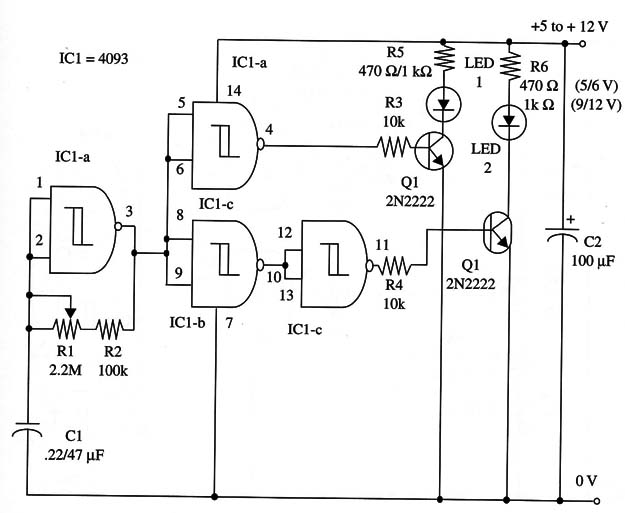This circuit has a 50 percent duty cycle and can drive a bicolor LED or two common LEDs. The LEDs will flash alternately at a rate that can be adjusted between 0.1 and 5 Hz.
The LEDs are driven by two transistor, thus you can wire up to five LEDs with the corresponding resistor to each transistor. The flash rate is adjusted by R1, and you can alter Cl to change the frequency range.
The circuit can also drive small incandescent lamps with currents up to 100 mA, without any modification in the given basic project. You only have to observe the lamp voltage and replace the LED and the series resistor with it.
A schematic diagram of the Dual-LED Flasher is shown in Fig. 1.

Proper positioning of the polarized components (LEDs, electrolytics, and transistors) must be observed.
The circuit can be controlled by a microcontroller such as the Arduino or PIC using pins 1, 5 and 8.
IC1 - 4093 CMOS integrated circuit
Q1, Q2 - 2N2222 NPN general purpose silicon transistors
LED1, LED2 - Bicolor or red and green common LEDs, Radio Shack 276-012
R1 - 2,200,000 ohm potentiometer
R2 - 100,000 ohm, 1/4 W, 5% resistor
R8, R4 - 10,000 ohm, 1/4 W, 5% resistors
R5, R6 - 1/4 W, 5% resistor, values according power-supply voltage (see table included in the schematic diagram)
C1 - 0.22 or 0.47 µF ceramic or metal film capacitor
C2 - 100 µF, 16 WVDC electrolytic capacitor



